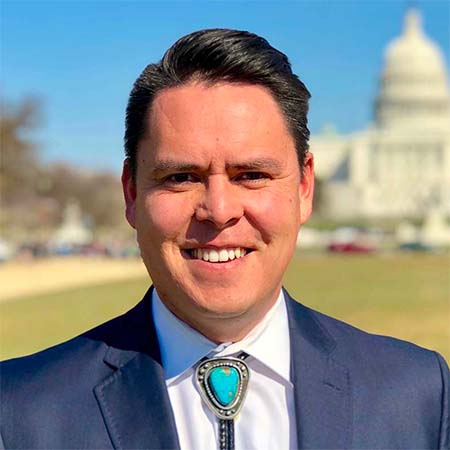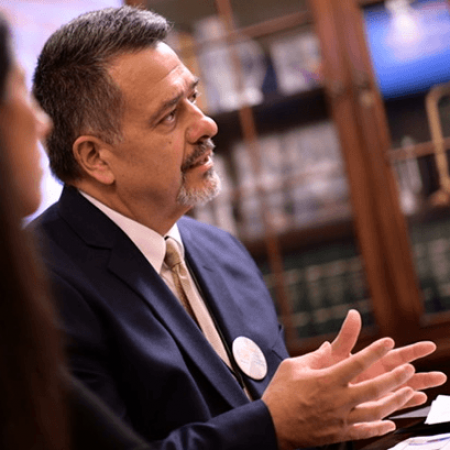Despite a 22-percent federal funding boost for Community Development Financial Institutions, Native CDFI leaders say the increase fails to meet the needs for their organizations, whose funding has remained static for the last seven years.

President Biden’s “skinny” budget, announced last week by the White House’s Office of Management and Budget, allocates $330 million to the more than 1,100 CDFIs across the country, including 69 Native CDFIs serving Indigenous trust land communities, American Indians, Alaska Natives and Native Hawaiians.
“Compared to the previous administration that repeatedly called the defund the CDFI fund, this is a great step forward,” said Jackson Brossy, executive director of the Native CDFI Network. “But what the broader CDFI industry was hoping for, and what Native CDFI was hoping for, was a real meaningful investment in CDFIs and confirmation and validation for the great work that they’re doing through a $1 billion dollar appropriation to the fund.”
Last fall, all 1,100 CDFIs collectively asked for a $1 billion allocation in response to stagnated funding and an exacerbated need throughout underserved communities hit hardest by COVID-19.
Over the last four years, the Trump administration consistently proposed eliminating funding for CDFIs in the budget it submitted to Congress. However, Congress instead chose to keep funding stagnant for the roughly 70 Native CDFIs.
 Native CDFI Network Chairman Pete UptonLast September, the Department of the Treasury’s CDFI Fund awarded $16.8 million for the 2020 fiscal year to 40 Native CDFIs in a competitive grant process, leaving out nearly half of the total institutions. Advocates like Brossy and Native CDFI Network Chairman Pete Upton, who also serves as executive director of Native360 Loan Fund Inc., say that CDFI allocations must increase on the whole so more Native CDFI can receive funding.
Native CDFI Network Chairman Pete UptonLast September, the Department of the Treasury’s CDFI Fund awarded $16.8 million for the 2020 fiscal year to 40 Native CDFIs in a competitive grant process, leaving out nearly half of the total institutions. Advocates like Brossy and Native CDFI Network Chairman Pete Upton, who also serves as executive director of Native360 Loan Fund Inc., say that CDFI allocations must increase on the whole so more Native CDFI can receive funding.
“We’re not asking to take a piece of the non-Native CDFI pie. We just want Congress to increase the size of the overall pie and that we get our fair share of the pie,” said Upton, whose Grand Island, Neb.-based Native360 Loan Fund serves tribal members across Nebraska, Iowa and southeast South Dakota.
This time around, Brossy said he’s hopeful Congress will instead choose to increase the President’s proposed allocation to CDFIs.
“Historically, we’ve received about $16 million, and that figure has barely moved over seven years,” Brossy said of the Native CDFI allocation through the Native American CDFI Assistance (NACA) Program. “We were hoping to bring it up to at least $30 million to start with.”
The $16 million allocation from the NACA Program helps Native communities in two different ways, Brossy said. It provides technical assistance to emerging CDFIs to become certified in lending and set up their infrastructure and offers financial capital that CDFIs can leverage to make loans in their communities.
“That’s money that would go directly to small businesses, entrepreneurs and consumers in the form of loans that they otherwise can’t get from a bank,” Brossy said.
According to a study of Native CDFI Network members about their response to COVID-19, the organizations have had to do more with the same amount of resources during the pandemic.
“They’ve done more loans without, for the most part, bringing on more employees and staff to manage them,” Brossy said.
As well, Native CDFIs in particular have faced challenges in serving their clients under various federal relief programs.
To that end, the first round of funding last year in the federal government’s Paycheck Protection Program (PPP), which was aimed at keeping employees on payroll amid pandemic-caused shutdowns across the country, effectively boxed out Native lenders because of a high minimum threshold to participate.
Of the nearly 70 registered Native CDFIs throughout 27 states, all but 5 percent of them were prevented from becoming PPP lenders because of a high minimum threshold, Brossy told Tribal Business News in January. Even so, some Native lending institutions got creative in partnering with larger non-Native CDFIs or banks to ensure their clients had access to the PPP dollars.
For example, Upton’s Native360 Loan Fund, in addition to nine Great Plains Native CDFIs that did not qualify as PPP lenders, partnered with a community reinvestment fund in Minneapolis to help facilitate PPP loans for their clients who didn’t qualify through a traditional bank to get the loans.
Brossy said Native CDFI Network expects to see proposed bills from the House and Senate in the next few months. Congress has until September to finalize the next fiscal year’s budget.
“We’re hopeful that Congress wants to invest in the CDFI Fund in a real and meaningful way that’ll result in not only saving jobs, but creating new ones in underserved communities like Native communities,” Brossy said.
Upton said Native CDFI Network will continue to advocate for more funding and show Congress the successes that Native CDFIs have had helping their communities throughout the pandemic.
“A lot of the times, if you’re not at the table, you’re on the menu,” Upton said. “We might not get all we asked for, but if we can get an increase, that’s what we want.”
